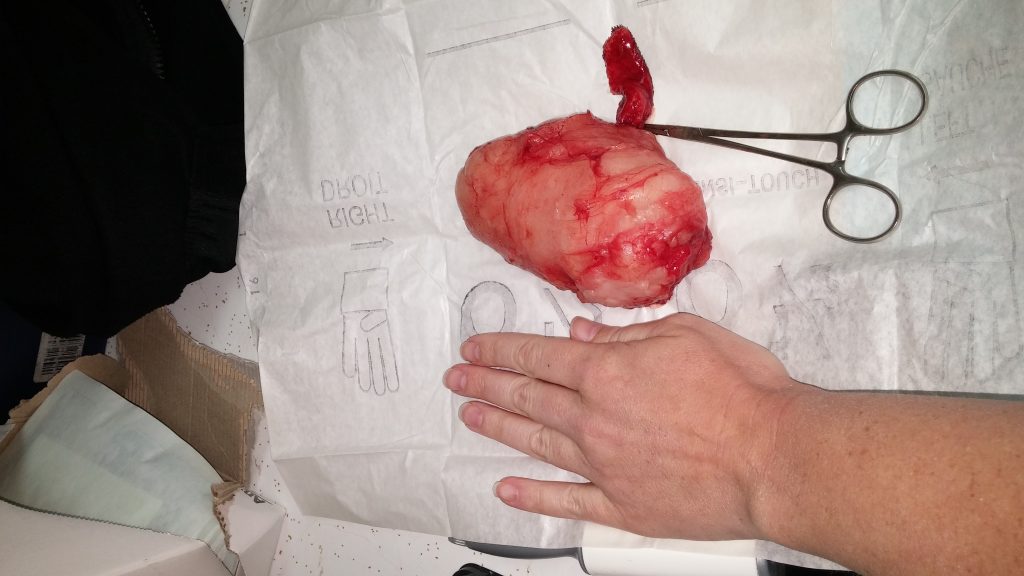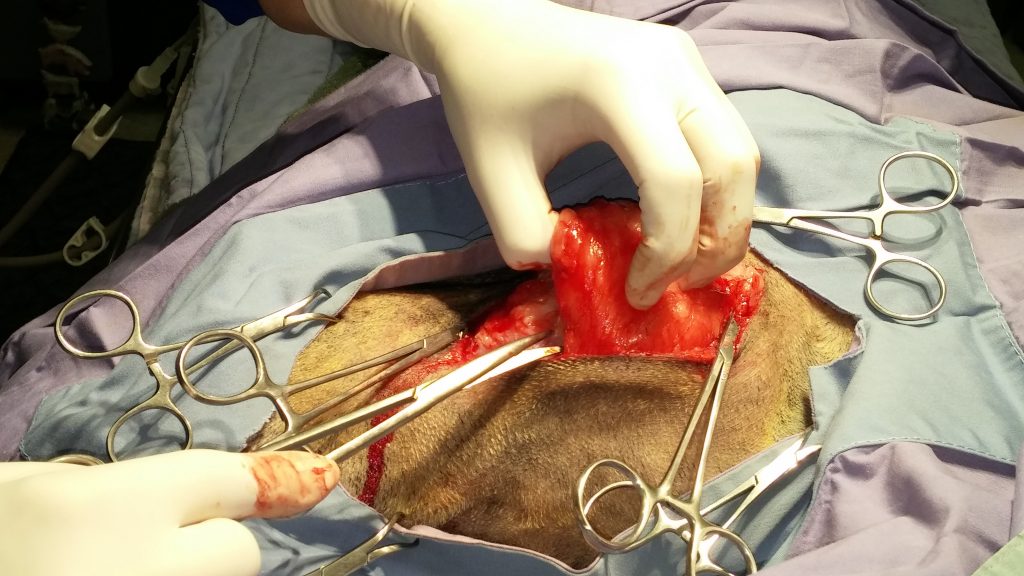This photograph shows Hobbs during surgery along with the fatty “blob” that we removed from his right leg. It was amazing how the tumor had pushed itself between the muscles of his leg.
Hobbs. . .
Hobbs is a 12 year old German shepherd mix breed dog that came in for evaluation of a fatty lump on his inner thigh that had developed over several years but was now causing him some difficulty with walking. Initial diagnosis of his lump was made through a needle aspirate of the lump and microscopic examination. The lump is called a lipoma, and it is a benign fatty tumor that is very common in dogs. As dogs get older it is very common for them to develop multiple lumps of this nature along the body. For the most part these tumors are a cosmetic issue . They often slowly enlarge over time and I have seen them get to be the size of a grapefruit or larger in some cases. Depending on the location, this may certainly become an issue for the patient when the tumor becomes big and cumbersome. Such was the case with Hobbs…his fatty tumor became large and started expanding between the muscles of his inner thigh…impairing the proper function of his leg. Hobbs was starting to have obvious difficulty walking so it became necessary to perform surgery to remove the tumor.
What was even more amazing was how Hobbs had improved in his ability to walk IMMEDIATELY after surgery!. There was a large defect (hole) left behind where the tumor was dissected free and removed> Hobbs had numerous sutures placed in his leg to re-oppose the normal tissues and close the large hole that was created.
Hobbs received medications to control pain for a few days after surgery. It was amazing how well he walked just within a few hours after surgery was completed. He is doing great and will be coming in this week for suture removal.
It is important to have pets receive an annual physical examination to detect any new lumps and bumps and have them evaluated. It is best to determine early on if these lumps are possibly cancerous or benign and then the best course of treatment can be selected for the patient.


